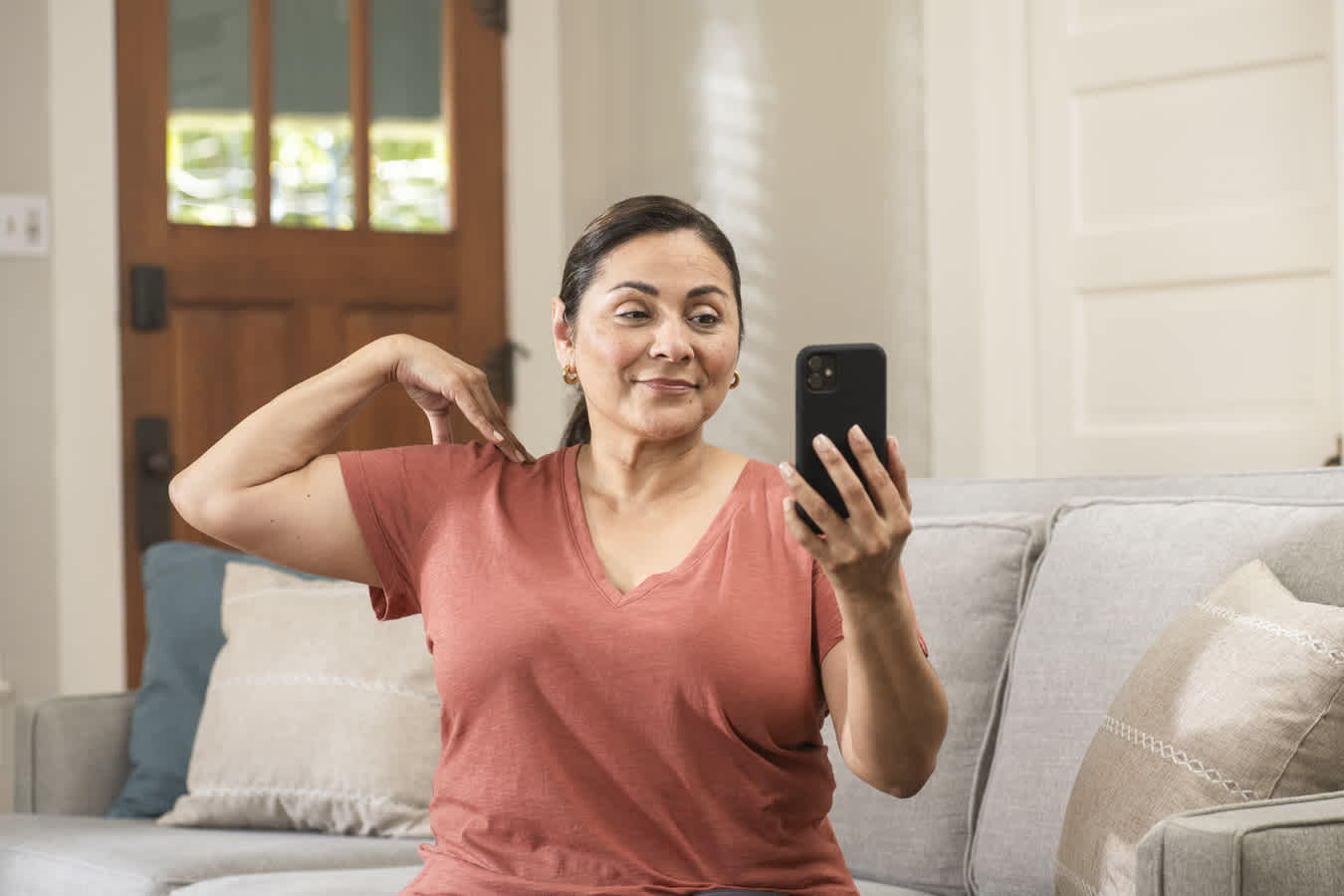Struggling with pain? Get relief with virtual physical therapy at home
See a Hinge Health physical therapist via video visit from the comfort of your home. No commutes, copays, or referrals.* Just pain relief to help you move with confidence
What is Hinge Health?
We’re a company on a mission to help people struggling with joint and muscle pain get relief with virtual physical therapy from the comfort of their home.
Our program includes:
Exercises that are personalized to each member based on their pain type.
Plans that can be done anywhere, at anytime in our app. It takes about 10 minutes.
Access to a physical therapist or dedicated health coach.
No matter your pain type, or if you’re looking to increase strength, improve flexibility, and mobility. We can help you!
To give Hinge Health a try, you must be covered through your employer or health plan. Eligible members get our program at no cost to them.
Meet some of our licensed physical therapists
Cody Anderson, PT, DPT
Dr. Anderson is a Hinge Health physical therapist with special interests in orthopedics, post-operative recovery, and movement optimism.
Nicole Stavale, PT, DPT
Dr. Stavale has been a physical therapist for 12 years and is a board-certified orthopedic specialist.
Caitlin Shaw, PT, DPT
Dr. Shaw is a Hinge Health physical therapist and board-certified sports clinical specialist.
Virtual physical therapy at home
Our program is virtual to make it easier for people with joint and muscle pain to get care that works for them. We understand people have busy lives and need a program that fits their lifestyle. Going to see a physical therapist during normal business hours just doesn’t work for everyone.
At Hinge Health, all you need is your phone and a place to do your exercise sessions. Focus on the health and wellness goals that matter most to you, instead of scheduling visits, worrying about commutes, or missing work.
Getting started with physical therapy at home
Here are three simple tips to help you get the most out of physical therapy at home.
Tip 1: Create the perfect space
Building any habit is tough, and that includes a new movement habit. Having a space that makes it easy, obvious, and appealing to move is an important way to make your habit stick.
Tip 2: Get some exercise accessories
Equipment is often optional, but it can be very helpful. It's common to find some movements that don't feel great at first as you get started. So some extra equipment like yoga mats, and even towels can offer you ways to modify, comfort, or stabilize movements, which can help make the movements work better for your body and your injury.
Tip 3: Set realistic pain relief expectations
While some pain relief can be short-lived, movement is a proven bridge to long-term pain relief. Pain relief and healing is a process, so as you walk the road to recovery, you should expect some bumps and detours. They are common and normal.
There's a lot of moving pieces in my life right now when it comes to my mental and physical health. Hinge is another tool in my tool box. It's a good tool. It's free for me, and I don't have to go anywhere. You can't beat that!!!
